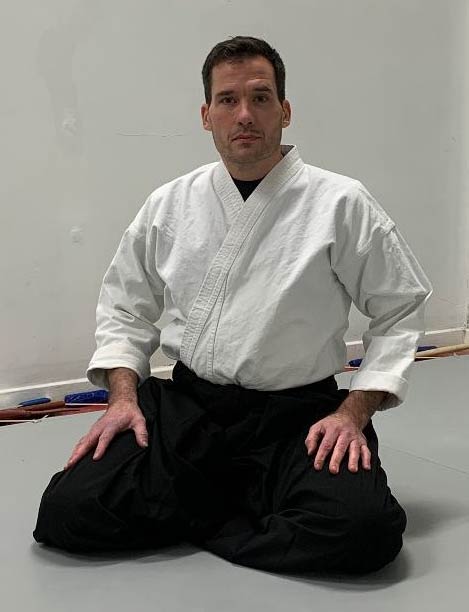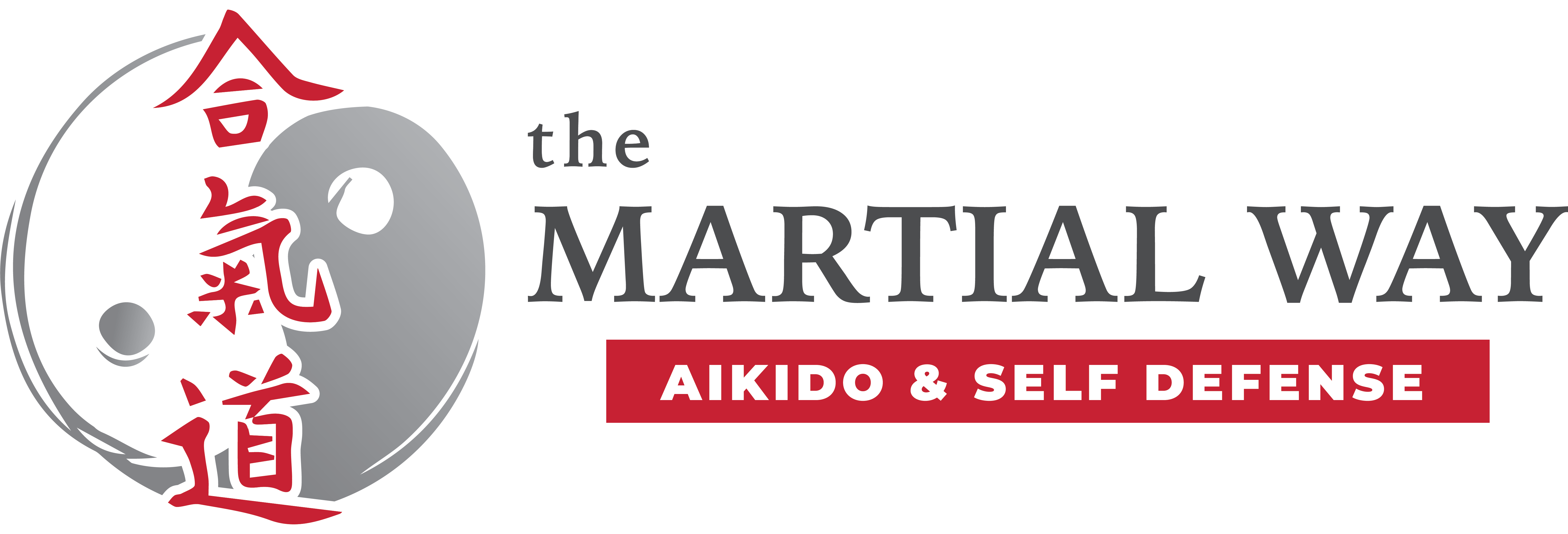At the beginning of every class we warm up with stretching, wrist flexibility exercises and movement exercises. These movement exercises are known as the Aiki Taiso or Aiki Exercises. There are 12 Aiki Taiso exercises and each can be found within the Aikido techniques that we practice. One of these exercises is Tai No Henko.
Tai No Henko is done by stepping forward and then doing tenkan on that foot, at the end of the tenkan turn extend your hands forward with palms facing up. How does this stance relate to Aikido techniques? Let’s look at the body position. At the end of Tai No Henko, you are in hanmi, weight down and equal on both legs, the upper body with a slight forward lean and arms extended forward. If you maintain that same position and turn your palms over you are in the stance used for ikkyo after the initial cut down of uke. So for example Shomenuchi Ikkyo Omote. Uke begins to swing shomenuchi, nage blends in and slightly off the line while blending with the raising of uke’s arm. Keeping the forward hand connected to the wrist and the rear hand grabbing the elbow; turn the hips sharply away from uke while cutting down keeping your hands away from your body with good extension. Now stop, turn your hands over so your palms are facing up. What position are you in?
Let’s look at swinging the bokken with first suburi. Start in right hanmi, hands rolled over on top of the sword. Raise the sword up and back while bringing the front foot back, keep the weight down and extend the left arm fully up with elbows in. Back foot stays in the position it started. Step forward with the front foot bringing the sword down, keeping the elbows in as if you are trying to roll them together finishing the cut. Now stop, remove the bokken from your hands and unroll them so that your hands are over and your palms are facing up. What position are you in?
As we perform Tai No Henko, it is not just an exercise to warm the body and practice tenkan movements. This exercise plays an important part in the Aikido techniques we work on each class.

